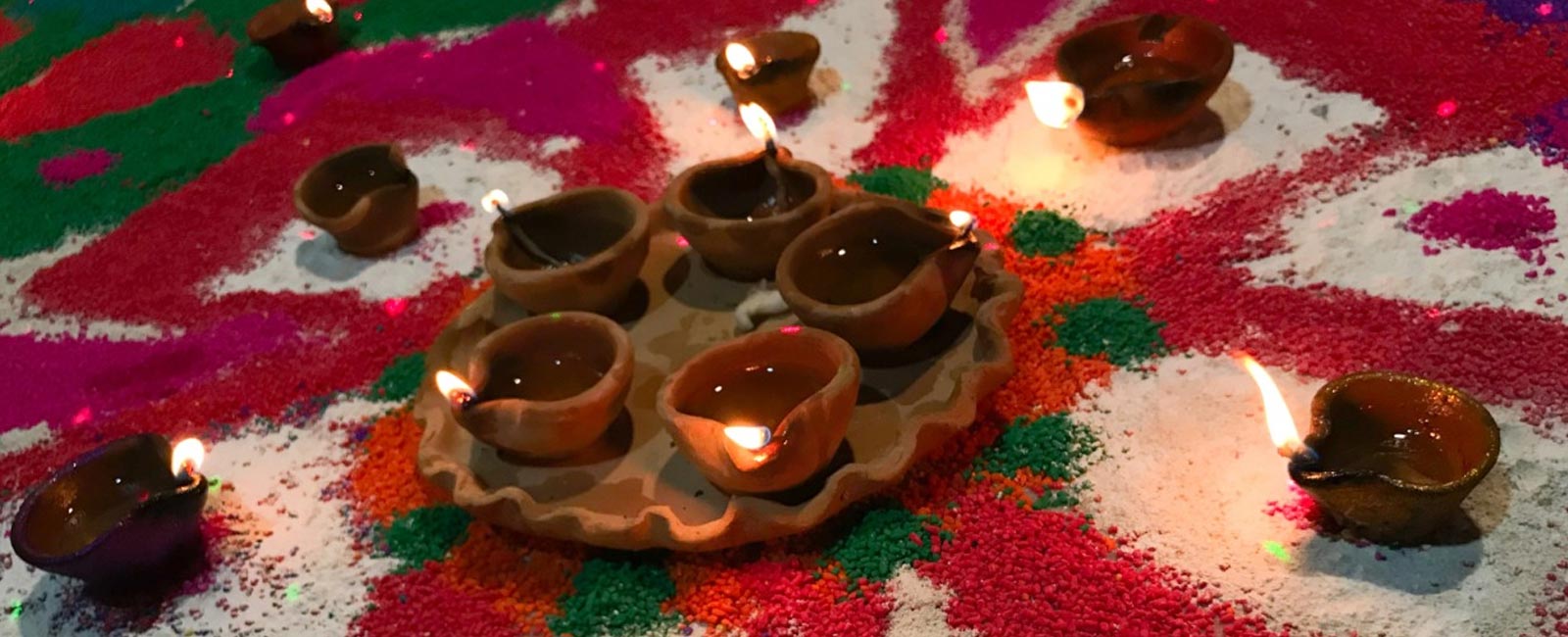Celebrating Diwali: The victory of light over darkness

On a sweltering Monday afternoon, a compound adjacent to the Shri Swaminarayan temple — located at Karachi’s iconic Light House on M A Jinnah Road — was buzzing with customers and vendors selling Diwali paraphernalia.
Stalls, kiosks, and makeshift shops inside the space were laden with figurines and images of Hindu deities in different sizes, decorative stickers with religious scriptures, a variety of firecrackers, prayer beads, diyas and other items made of clay, coloured powder for making rangoli (murals on the floor), jewellery, and shimmery fabric in red, yellow, and saffron to decorate the holy figures, among other items.
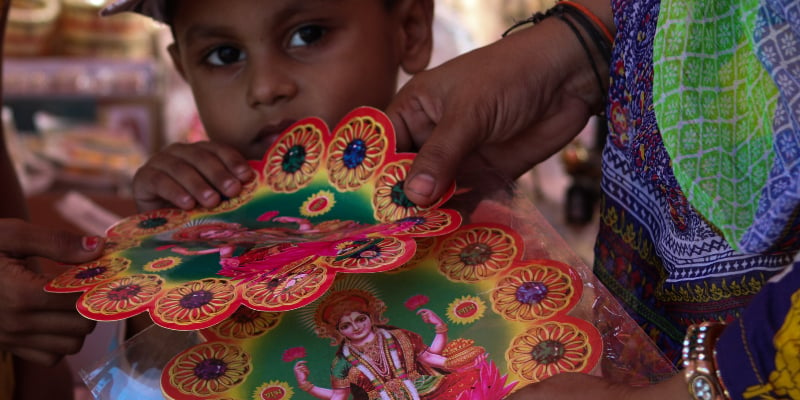
It was the last few hours before Diwali’s grand Lakshmi Puja was to begin at this two-centuries-old temple named after Shri Swaminarayan, who belonged to India’s Ahmedabad city and was considered an incarnation of a Hindu God.
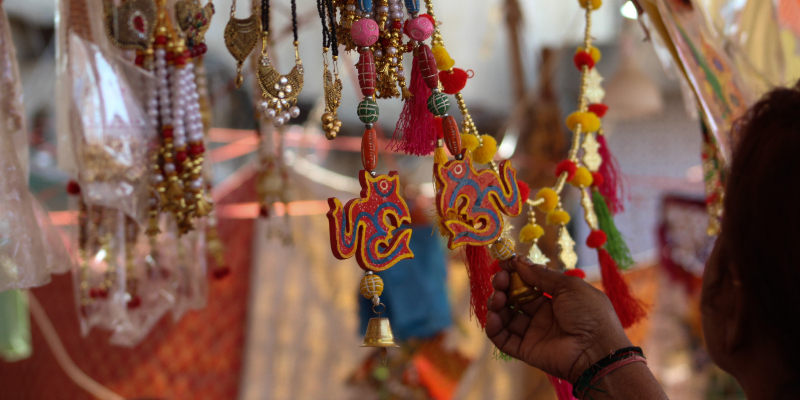
The buzz in this temporary shopping compound grows as the day draws closer to the festive evening. Ashok, 45, sets up his stall in the compound every year and lives close by. Earlier, his father would manage it, but the sons have taken over since his passing. The stall, selling festive paraphernalia, is run by Ashok for seven to eight days ahead of Diwali’s grand prayer night, which this year fell on October 24.
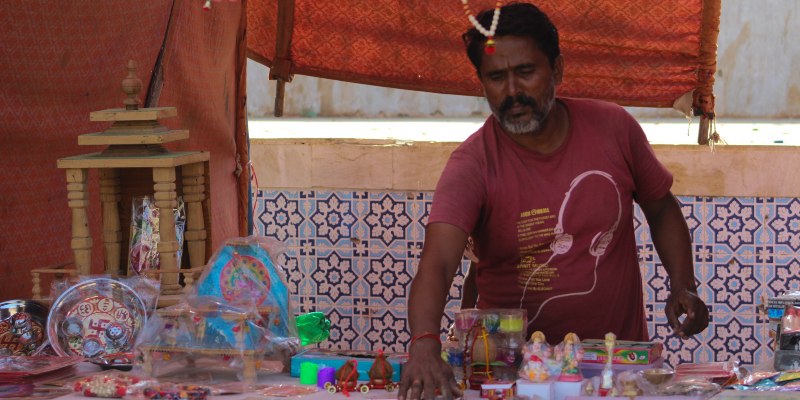
“This time, we got permission to set up the stall for six days and today is the last day. We sell a lot of items. From rangoli, diyas, photos of Goddess Lakshmi, and a miniature stage to place the deity that we make at home,” Ashok said while talking to Geo.tv.
Ashok was happy that most of his items have sold out since it was the last day of work for them.
“People buy almost everything because it’s Maa Lakshmi's pooja (worship) today. But this year, due to inflation, items were a bit pricey which has affected people’s purchasing power. Otherwise, the atmosphere is happening during these days, especially in the evenings,” he said, sharing that he goes home to celebrate Diwali once he’s done selling off all the items.
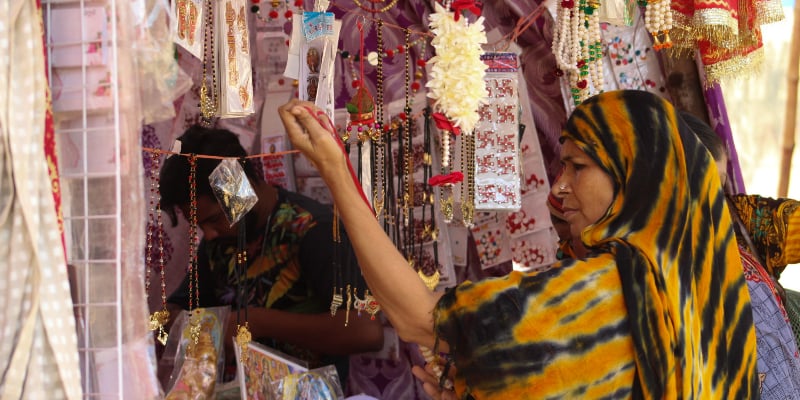
The 60-year-old Arjun sits beside a huge stall inside the temple’s compound. He calls himself a gypsy who, around the year, manages stalls selling festive items for the community’s pilgrims making journeys to places considered holy for Hindus and Sikhs across Pakistan.
“I run the stall for seven days. We will shut it down at 4pm. I travel for pilgrimages around the year including Hinglaj, Nankana Sahib, Gurdwara Panja Sahib (Hasan Abdal), Umerkot, and other places. I’ll go to Nankana Sahib next,” Arjun informed, as firecrackers burst in the background.
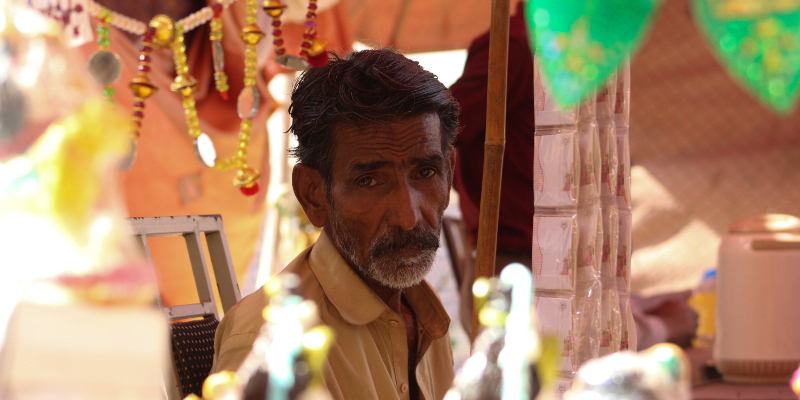
The statues and figurines at his stall vary in size and price. Produced intricately by artisans in Sindh’s Tando Allahyar district, the statuettes range between Rs30,000 to Rs200 with the Radha Krisha figure being the most expensive one, He, too, laments about the rising inflation during the festive season.
“Everything is getting expensive. I can’t sell a costly item for a cheaper price because I’m also investing a lot of money in it. The business has been low this year because people aren’t able to buy and bargaining isn’t helpful in this inflation-ridden economy,” Arjun complained, adding he returns whatever remains unsold to the manufacturers in Tando Allahyar.
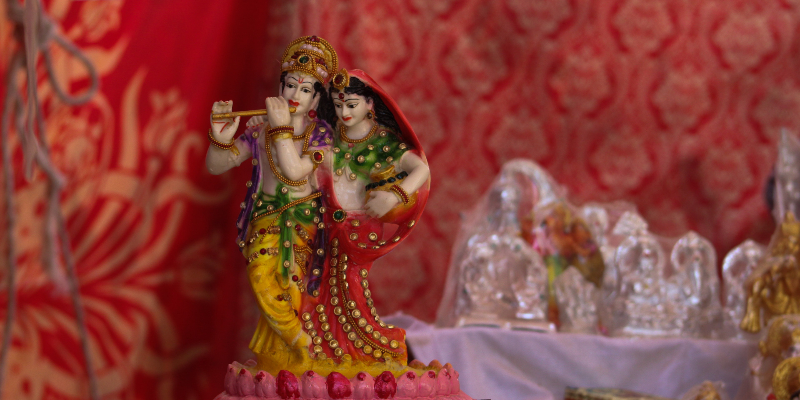
A little girl named Krishna also sells miniature stands to place diyas and figurines of deities on. She sits on the compound’s sandy ground with items placed on a sheet of cloth. She comes to the temple every year with her family from Chanesar Goth.
“You place diyas and figurines on this stand. People keep it inside their homes during Diwali,” Krishna shared while talking to Geo.tv.
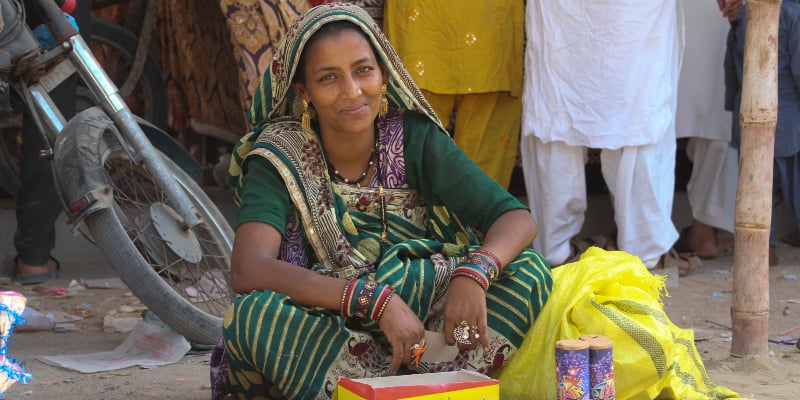
Seated next to Krishna was Mona, who sells a variety of firecrackers that people ignite to celebrate the festival of lights.
“I sell firecrackers here every year. We enjoy ourselves a lot during Diwali. It’s the time we get to ignite these crackers and light up the atmosphere around us,” Mona shared with excitement, but also felt upset that work wasn’t as speedy as it was for her during the previous years.
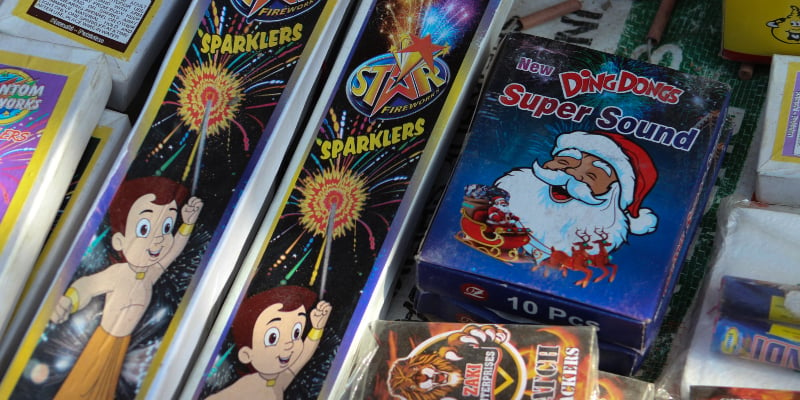
“Work is very slow this year because of inflation. We invested more than what we earned this time around,” she said.
Mona, 23, sits on the ground with her makeshift stall while her siblings manage their own kiosks in the compound. She lives with her husband, three children, and in-laws in Bhimpura, but spends her days ahead of Diwali in the colony near the temple where her mother and siblings reside.
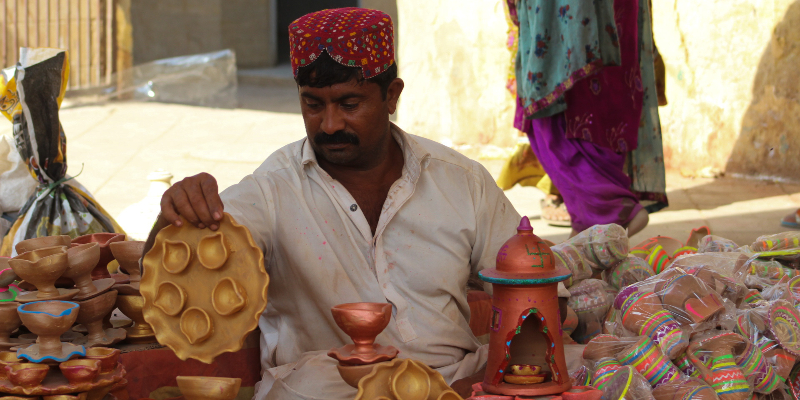
Karamchand Thavrani is the coordinator of the Pakistan Hindu Council. Taking rounds of the compound to buy a few items, the 55-year-old sat down at one of the stalls selling diyas made of clay.
“We try to spread happiness in the community as much as we can. We distributed cheques on the occasion of Diwali. Today, we celebrate joy and light. This festival encourages us to coexist with love,” Karamchand said, adding that Pakistan is a wonderful country for everyone where communities must ensure brotherhood.
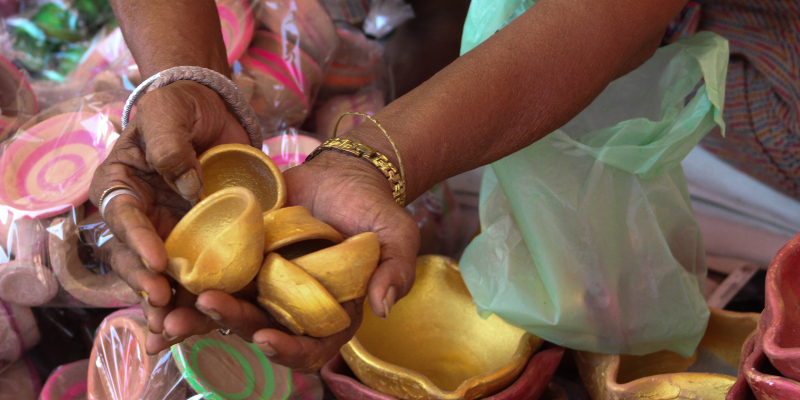
The temple is a site to witness at night. Lights dazzle on its structure, the festive hustle and bustle alleviate the ambience, children speed through the stairs that lead devotees towards the main prayer area, and religious hymns play in the background.
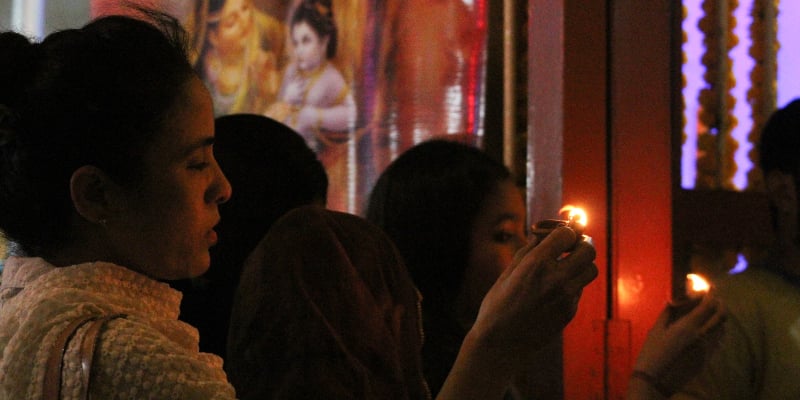
After the Lakshmi pooja — to celebrate the favours of Goddess Lakshmi — ended, some devotees sat down to take a breath while others roamed around the temple distributing sweets. Children and young adults, however, rushed toward the platform opposite the temple’s building, designated to ignite firecrackers.
The temple’s chief priest Vijay Maharaj led the Diwali prayers. One after another, devotees went to meet him and pay their respects at the temple.
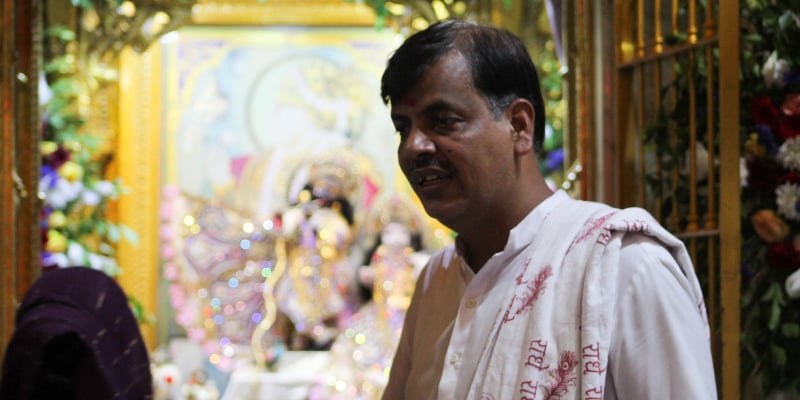
“It feels nice to see people celebrating today at the temple. Some also celebrate at their homes, offer prayers, light up diyas, ignite crackers, make mithai to eat and share with others,” Maharaj remarked, stressing the need to celebrate happiness on the holy occasion.
Living inside the temple’s residential colony, Krishna — a housewife and mother of two — stood outside her home’s veranda and struggled to light up a phuljari (sparkler).
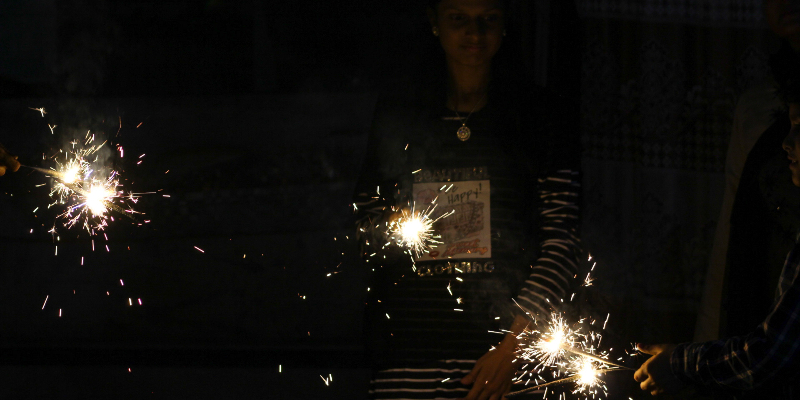
When asked what part of Diwali she enjoys the most, Krishna said: “We offer prayers, eat mithai, and light up our homes. It’s fun to see everyone enjoying the festive season. We start bursting crackers two days before the pooja night.”
Suman, who appeared to be in her 70s, was seated inside the colony’s entrance gate waiting for her son to come back from the temple. She lives nearby and offers prayers at home, but the elderly lady visited the holy site to seek blessings and waited there to leave for home once her son returned.
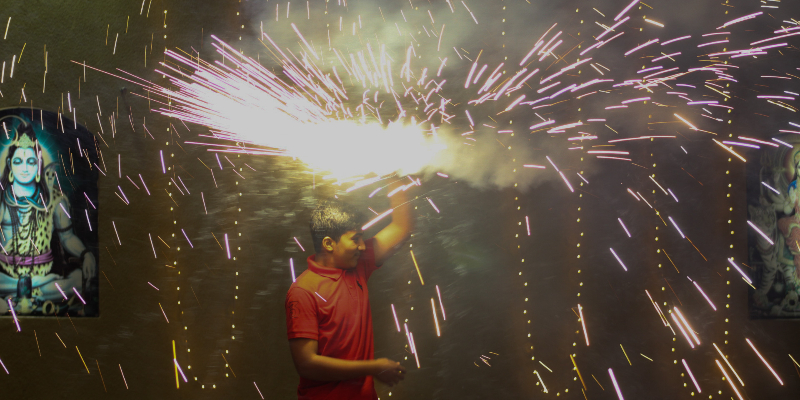
“I feel very nice. I offered my prayers at home during the evenings with my son and two daughters. I haven’t seen this amount of fervour in my life. This time around, it’s immensely festive,” Suman commented in her quivering voice.
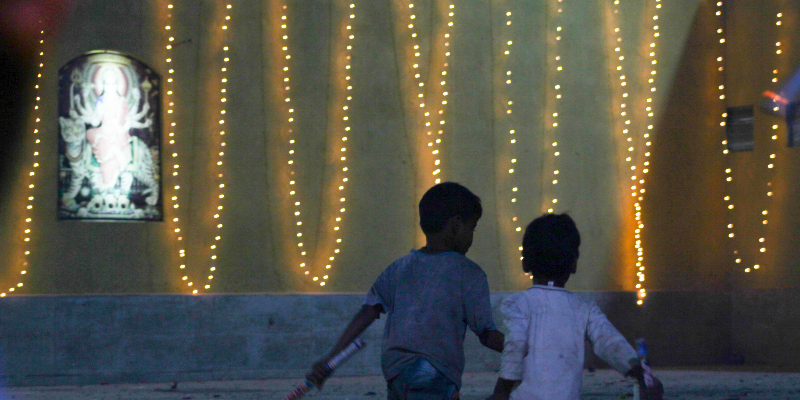
The five days of Diwali begin with Dhanteras when Goddess Lakshmi is worshipped; Naraka Chaturdasi or Choti Diwali is celebrated on the second day when Lord Krishna ended the Narakasur demon; on the third day Lakshmi pooja is performed which is the festival’s significant eve; the fourth day is dedicated to Govardhan pooja associated with Lord Krishna; while Bhai Dooj is celebrated on the fifth day when sisters pray for their brother’s long and happy life. On the third day of Diwali, the Hindu community also celebrates the arrival of the New Year the next day.
Like every year, Diwali celebrations at the Shri Swaminarayan temple remained lit with joy and fervour within the community.



